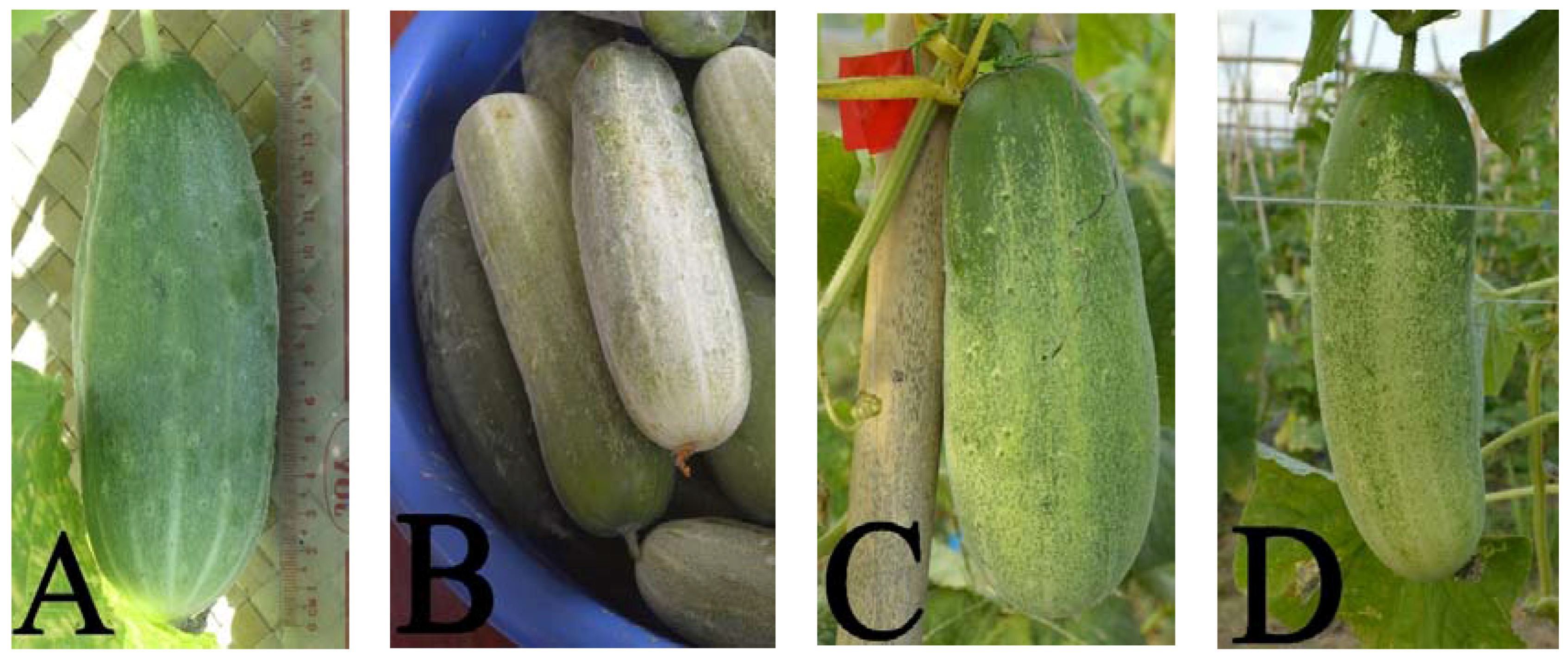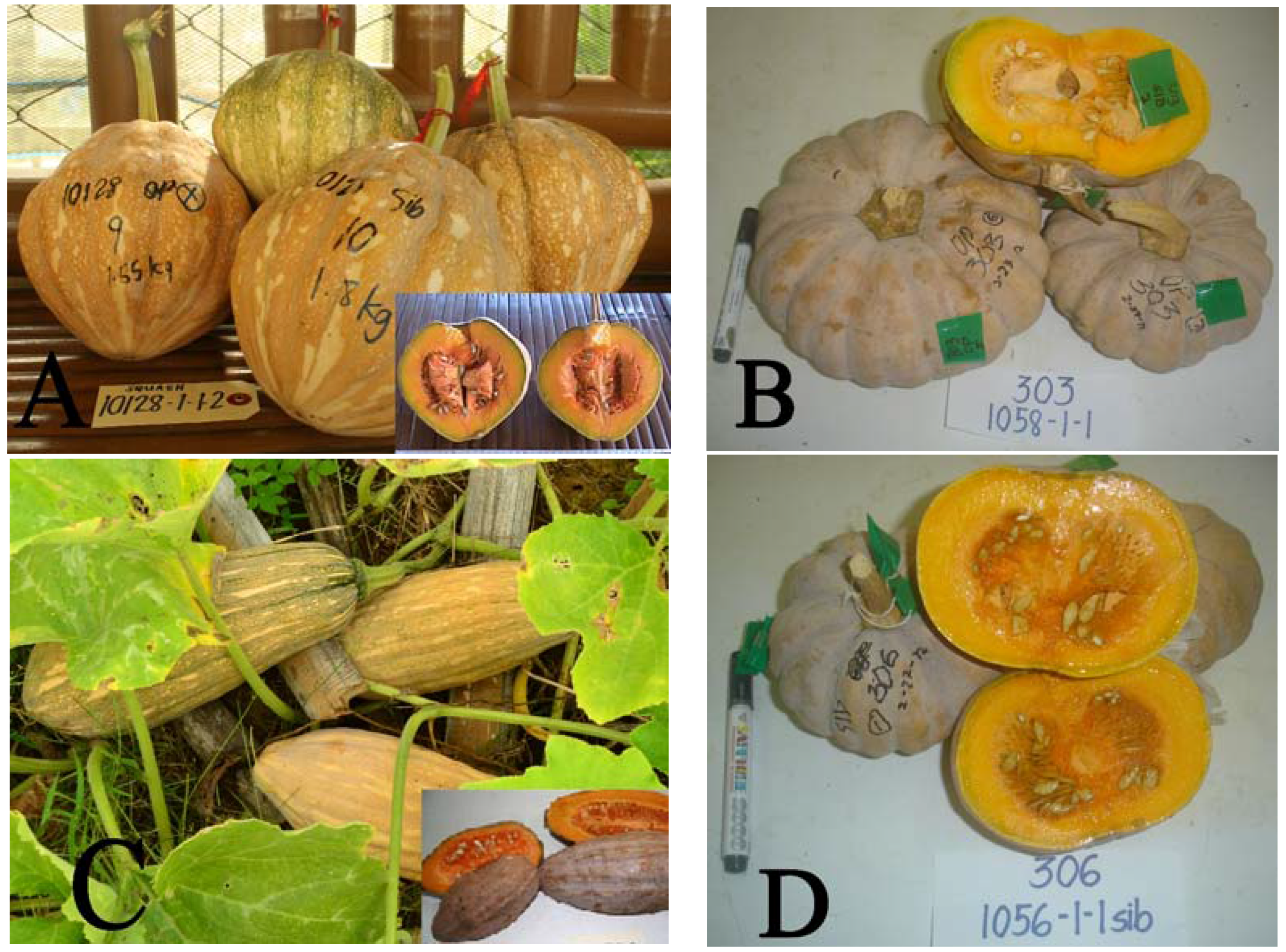Organic Plant Breeding: A Key to Improved Vegetable Yield and Safe Food
Abstract
:1. Introduction
2. Experimental Section
2.1. Variety Development
2.2. Replicated Yield Trials
2.3. On-Farm Trials (OFT)
2.4. Breeder Seed Production
2.5. Data Analysis
3. Results and Discussion
3.1. Yardlong Bean
3.2. Cucumber
3.3. Lettuce
3.4. Squash
4. Conclusions
Acknowledgments
Author Contributions
Conflicts of Interest
References
- IFOAM. Consolidated Annual Report of IFOAM—Organics International; IFOAM-Organics International Head Office: Bonn, Germany, 2015. [Google Scholar]
- Ratanawaraha, C.; Ellis, W.; Panyakul, V. Organic Agri-Business: A Status Quo Report for Thailand 2007; Thai-German Programme for Enterprise Competitiveness, Sustainable Agriculture Foundation and GreenNet Foundation: Bangkok, Thailand, 2007. [Google Scholar]
- Lammerts van Bueren, E.T. Organic Plant Breeding and Propagation: Concepts and Strategies. Ph.D. Thesis, Wageningen University, Wageningen, The Netherlands, 2002. [Google Scholar]
- Legzina, L.; Skrabule, I. Plant Breeding for Organic Farming: Current Status and Problems in Europe; Compendium ENVIRFOOD: Talsi, Latvia, 2005. [Google Scholar]
- IFOAM. IFOAM Position on the Use of Organic Seed and Plant Propagation Material in Organic Agriculture; IFOAM Head Office: Bonn, Germany, 2011. [Google Scholar]
- Maghirang, R.G.; Rodulfo, G.S.; Enicola, E.E.; Candelaria, R. Organic Breeding and Seed Production in Selected Vegetables. In Proceedings of the Organic Seed Preconference of the 17th IFOAM Organic World Congress, Namyangju, Korea, 26–27 September 2011.




| Crop/Entry | Yield (t/ha) | Yield Advantage (%) |
|---|---|---|
| Yardlong bean | ||
| 0801-5-1-1-0 | 22.29 | 31.0 |
| 1096-1-1-0-0 | 22.13 | 30.1 |
| 10421-0-0 | 21.25 | 24.9 |
| 10116-1-1-0-0 | 20.29 | 19.3 |
| Check | 17.01 | |
| Cucumber | ||
| 11622 | 26.03 | 43.0 |
| 11621 | 18.87 | 3.7 |
| 11617 | 18.54 | 1.8 |
| 11624 | 17.97 | −1.3 |
| Check | 18.21 | |
| Lettuce | ||
| Le 1103(Looseleaf) | 10.96 | 44.0 |
| Le 0701 (Looseleaf) | 6.38 | −16.1 |
| Check (Looseleaf) | 7.61 | |
| Le 0702 (Cos) | 7.74 | 0.9 |
| Le 1104 (Cos) | 6.93 | −9.7 |
| Check (Cos) | 7.67 | |
| Squash | ||
| 10128-1-1 | 61.03 | 47.5 |
| 1058-1-1 | 48.03 | 16.1 |
| 1056-1-1 | 42.83 | 3.5 |
| 10127-1-2 | 49.67 | 20.1 |
| Check | 41.37 | |
© 2016 by the authors; licensee MDPI, Basel, Switzerland. This article is an open access article distributed under the terms and conditions of the Creative Commons Attribution (CC-BY) license (http://creativecommons.org/licenses/by/4.0/).
Share and Cite
Maghirang, R.; Grulla, M.E.; Rodulfo, G.; Madrid, I.J.; Bartolome, M.C.P. Organic Plant Breeding: A Key to Improved Vegetable Yield and Safe Food. Horticulturae 2017, 3, 4. https://doi.org/10.3390/horticulturae3010004
Maghirang R, Grulla ME, Rodulfo G, Madrid IJ, Bartolome MCP. Organic Plant Breeding: A Key to Improved Vegetable Yield and Safe Food. Horticulturae. 2017; 3(1):4. https://doi.org/10.3390/horticulturae3010004
Chicago/Turabian StyleMaghirang, Rodel, Maria Emblem Grulla, Gloria Rodulfo, Ivy Jane Madrid, and Maria Cielo Paola Bartolome. 2017. "Organic Plant Breeding: A Key to Improved Vegetable Yield and Safe Food" Horticulturae 3, no. 1: 4. https://doi.org/10.3390/horticulturae3010004





